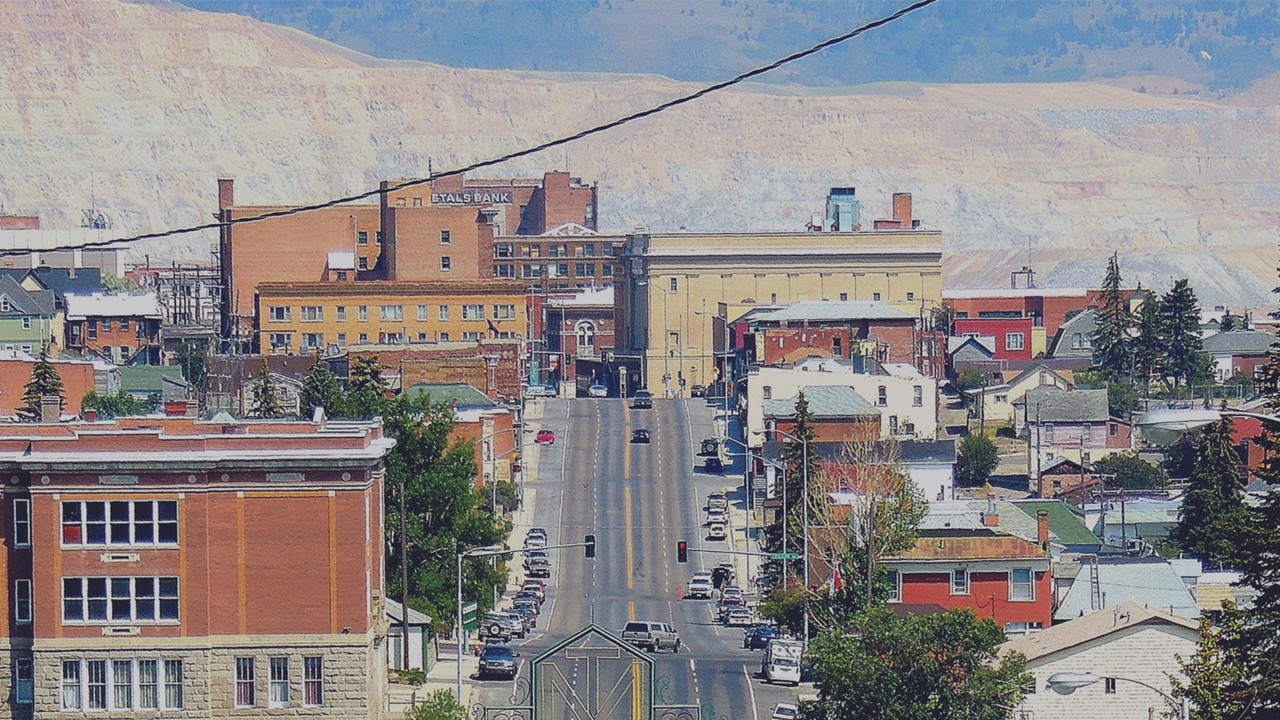Butte, Montana

A former boom town perched high in the Rocky Mountains, Butte-Silver Bow lies atop a labyrinthine network of dormant copper mines, once known as the “richest hill on earth” for its mineral wealth.
Eighty years ago, at the peak of the copper boom, Butte’s population was three times what it is today. Historically, Butte-Silver Bow’s population, development, and economy rose and fell with the volatile price of copper. From its peak in the 1920s to a halt in mining activity in 1982, Butte-Silver Bow’s fortunes eventually dwindled to that of a once-storied mining town without a mine.
Today, after a return of mining operations in the late 1980s, mining/energy companies are still an important employer in the area, offering some of the highest paying jobs; however, efforts are ongoing to diversify the economy into tourism, recreation, and more. Although mining activities in the area peaked decades ago, the community exists and has developed because of the value of the precious metals found within the earth beneath it. Said to be the most heavily mined ground in the world, Butte sits atop an estimated 7,000 miles of abandoned mine tunnels and smelting waste pits that have since slowly filled with a neon blue “plume” of toxic wastewater in an aquifer 50 to 60 feet below the surface.
